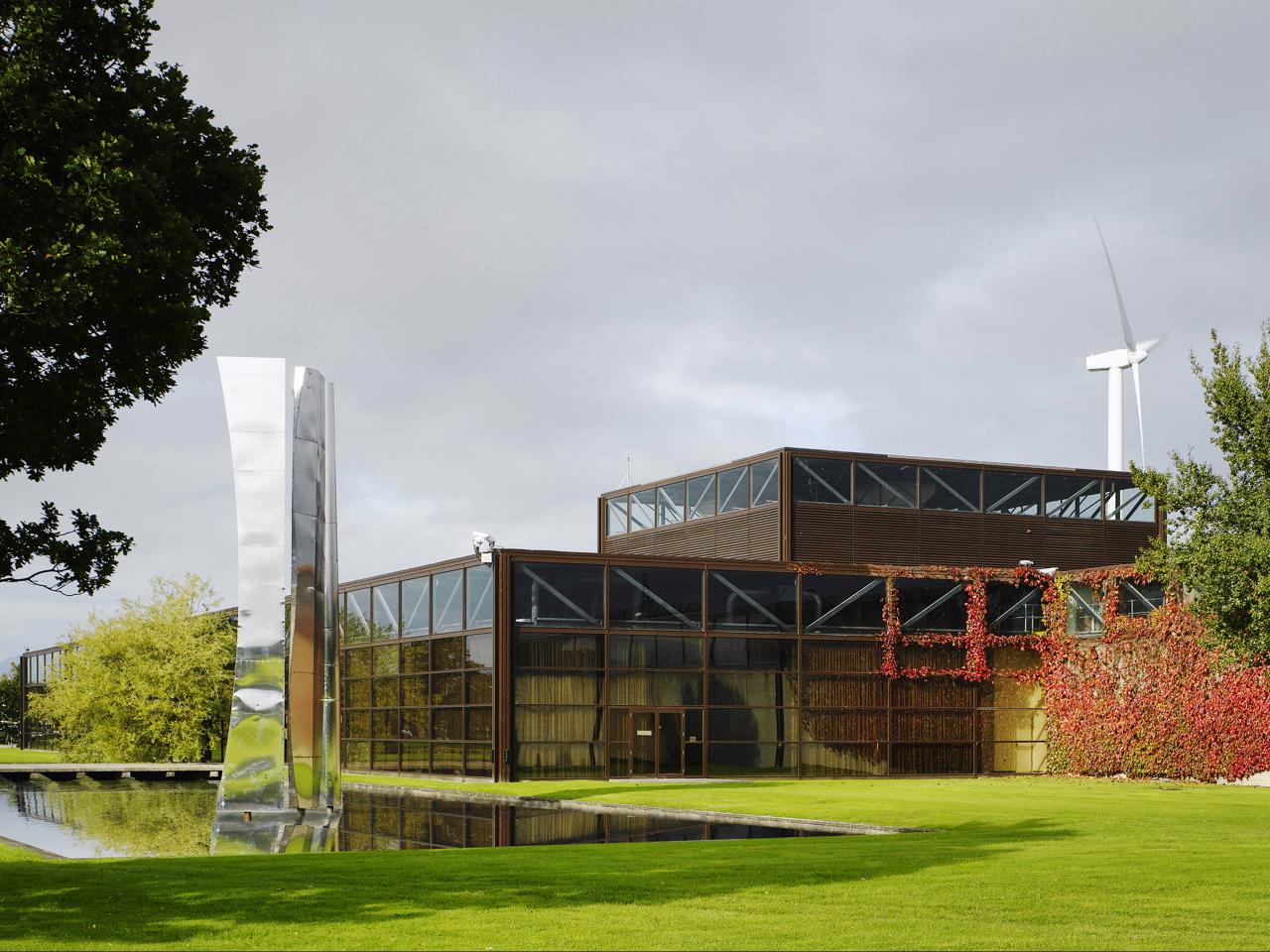
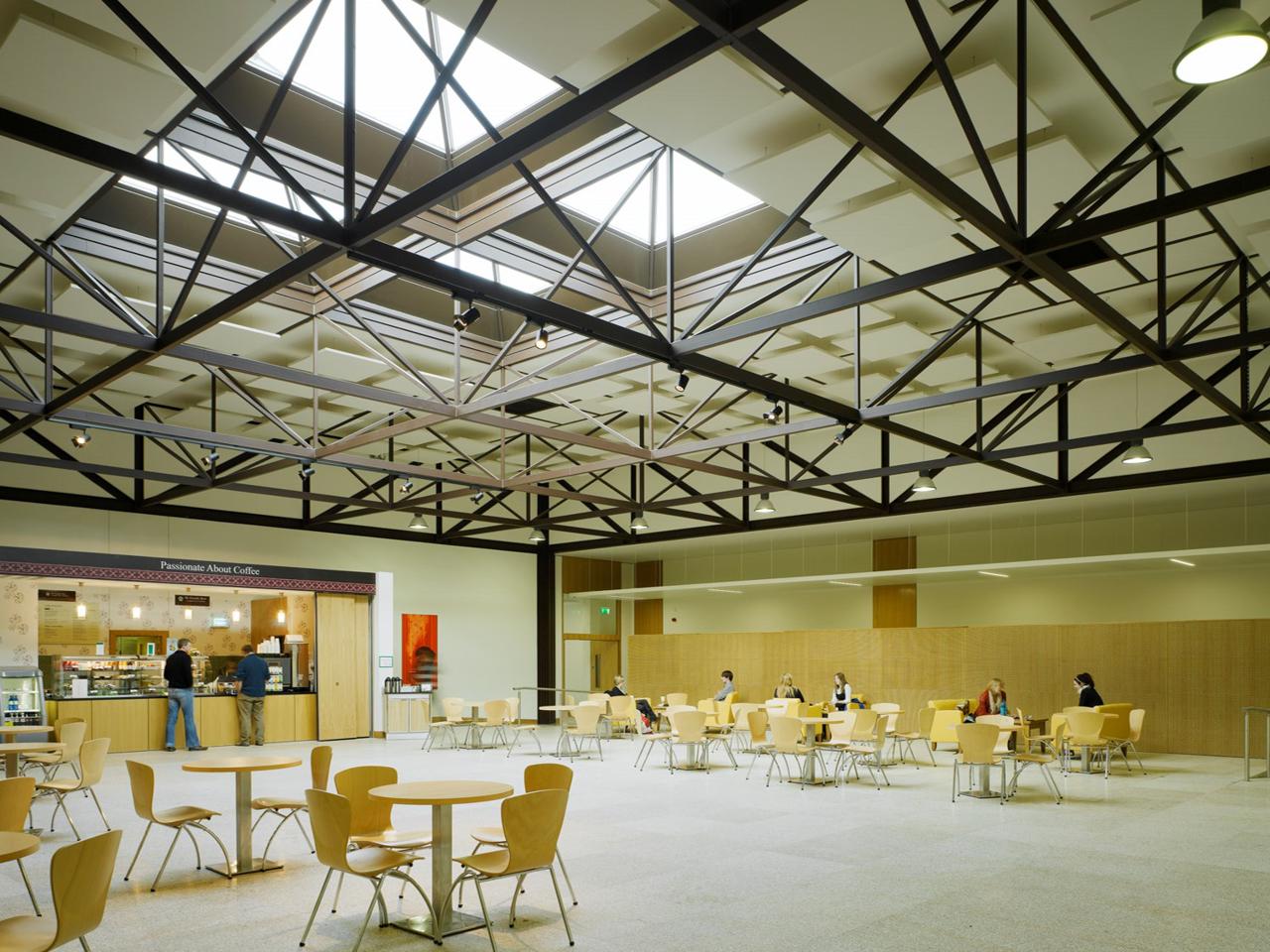
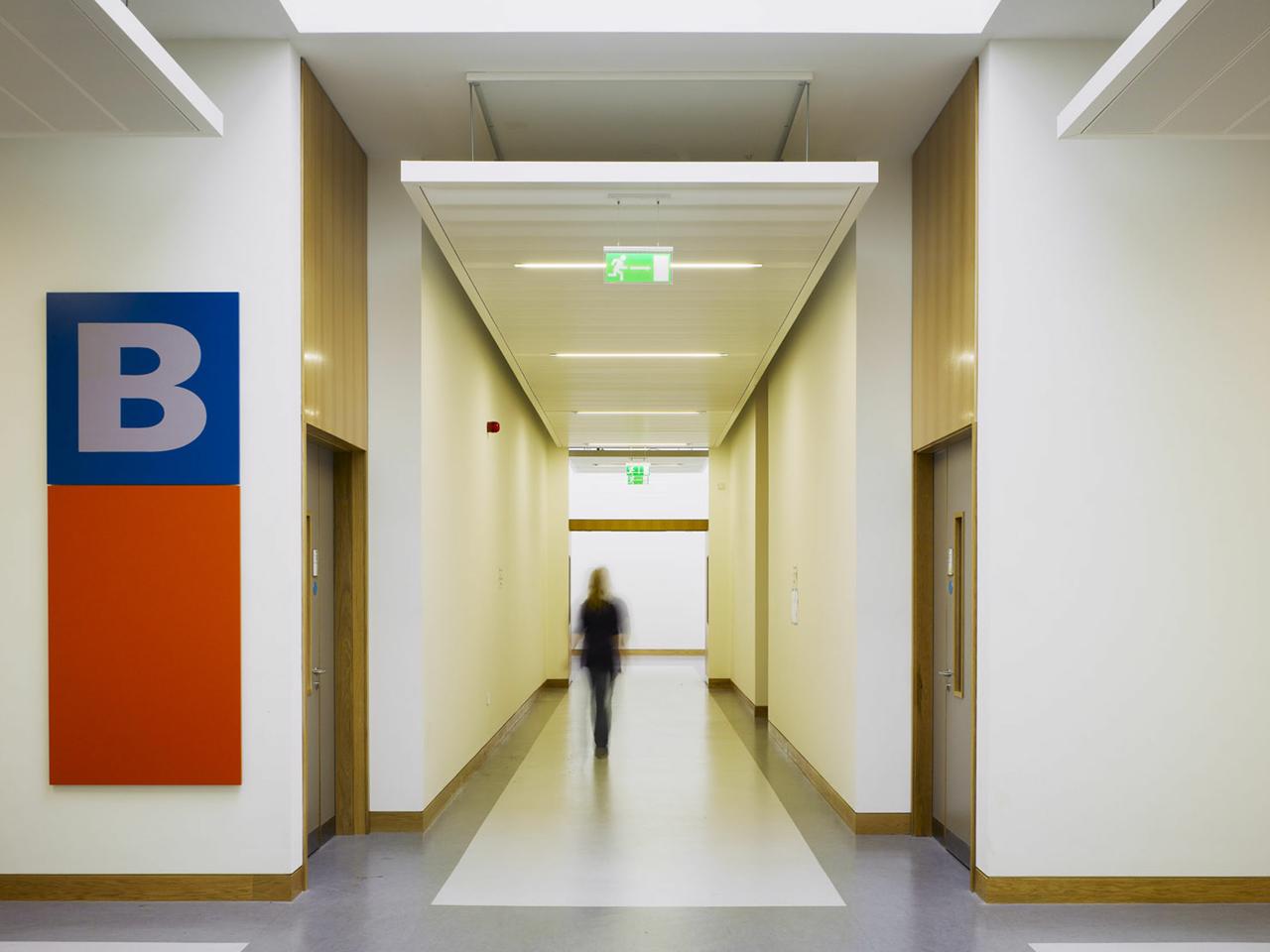
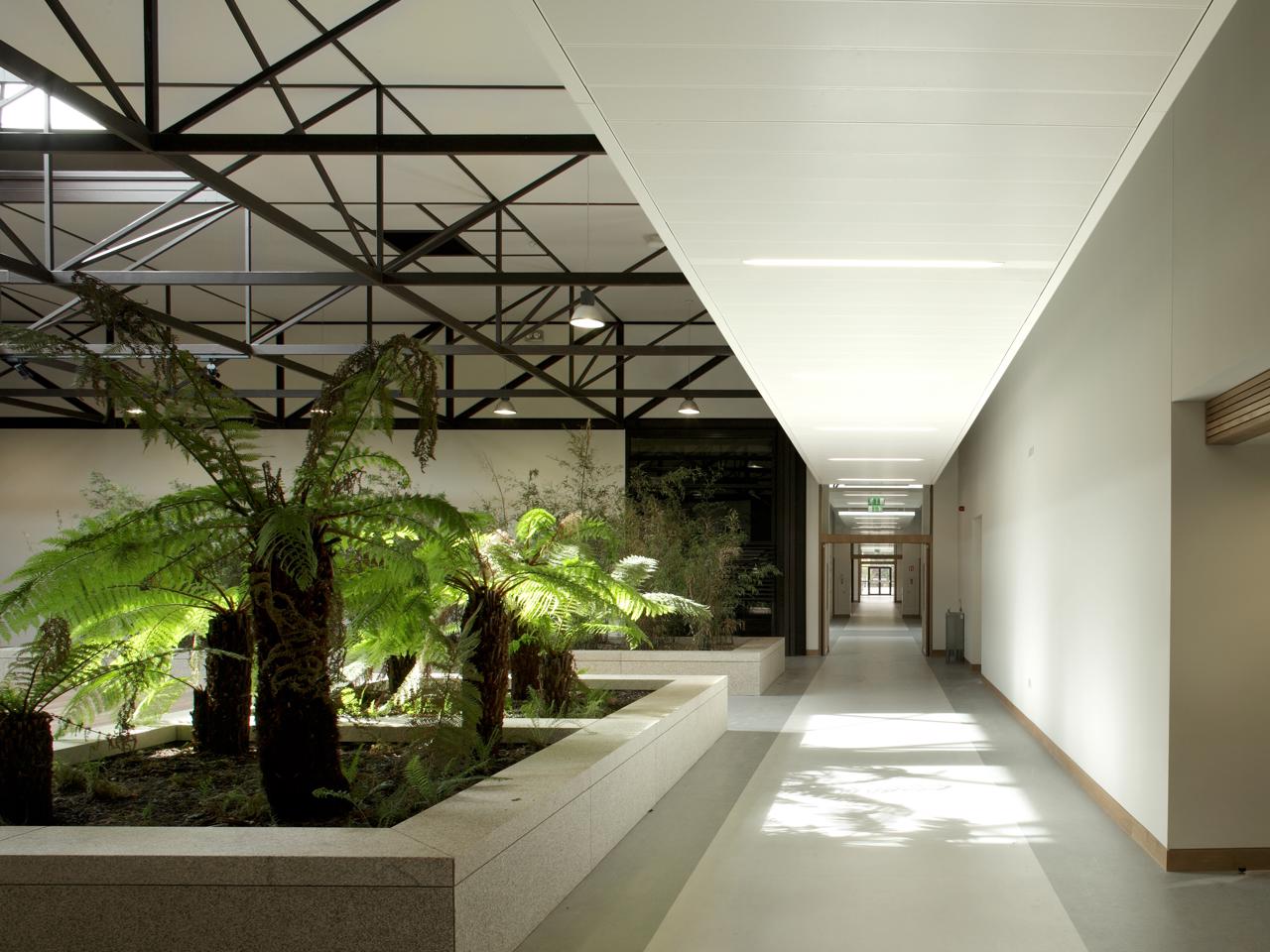
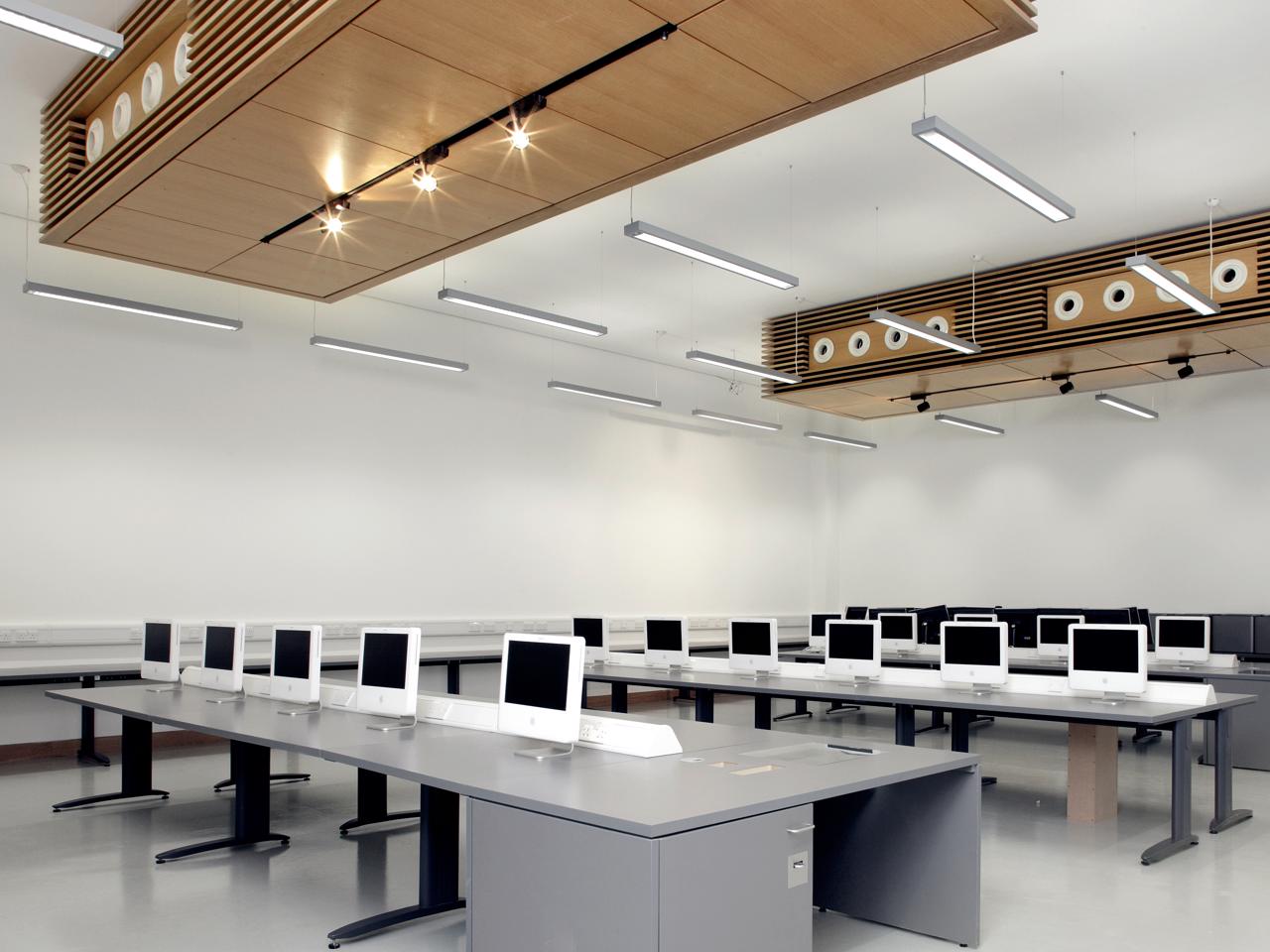
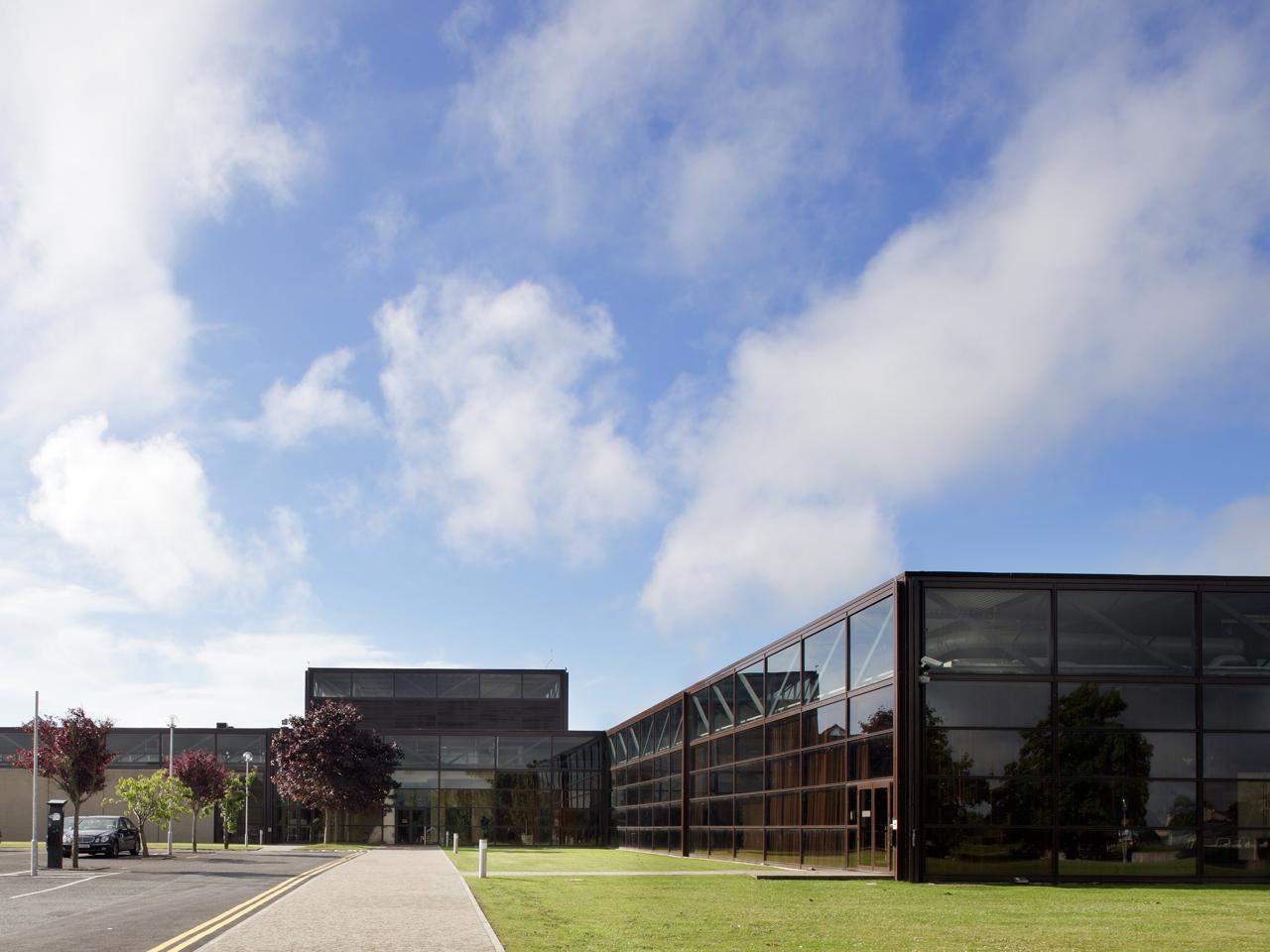
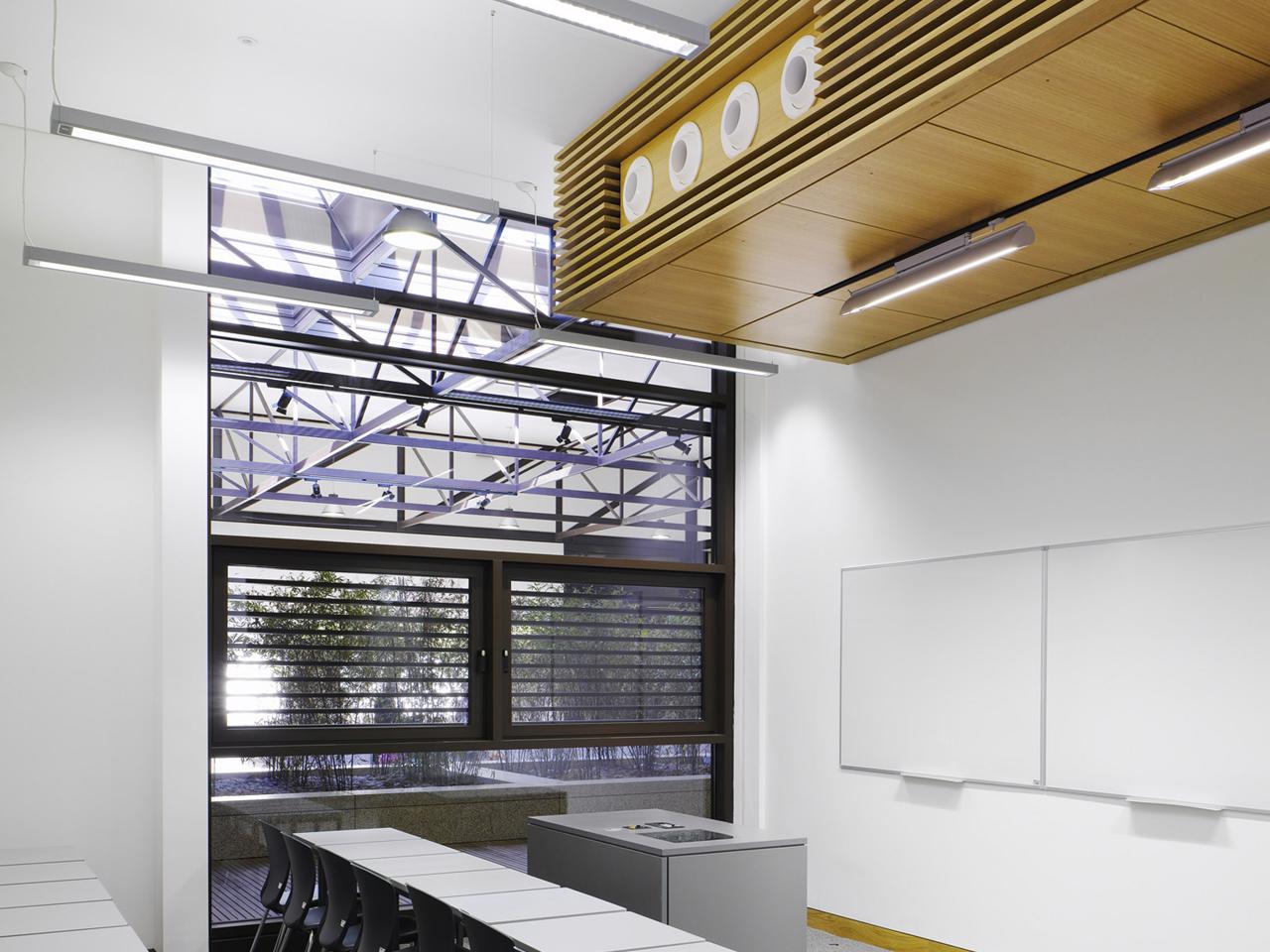
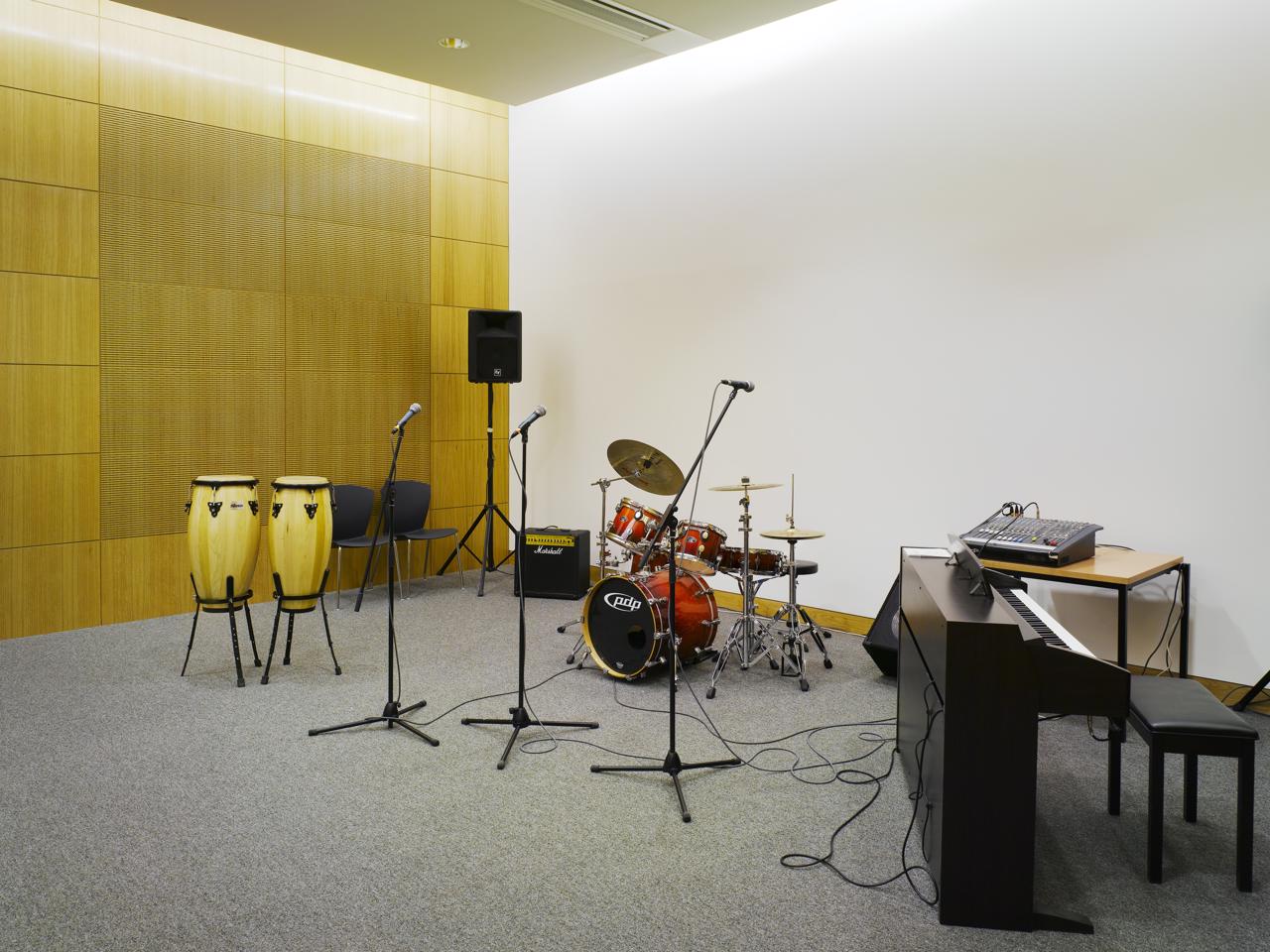
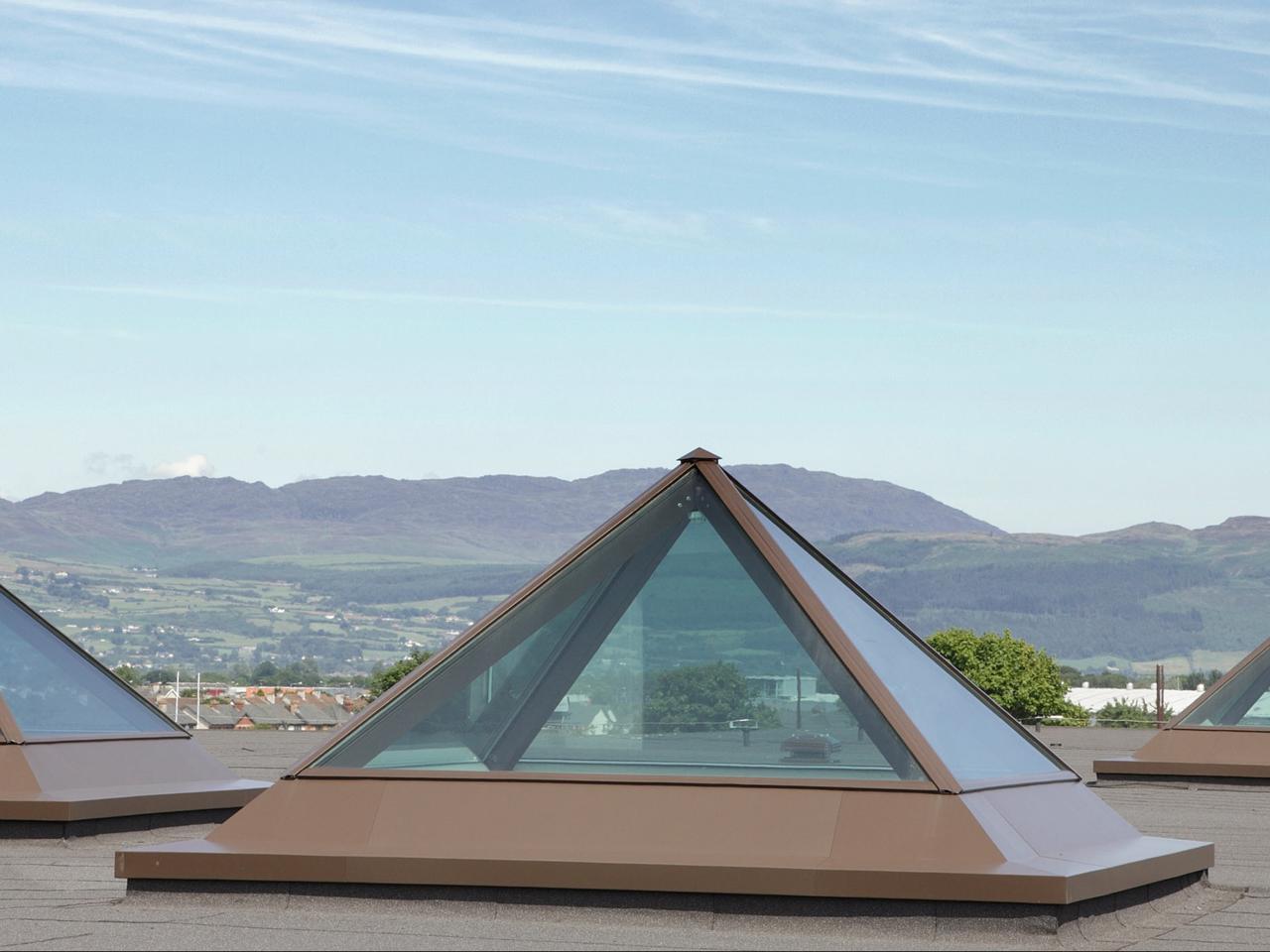
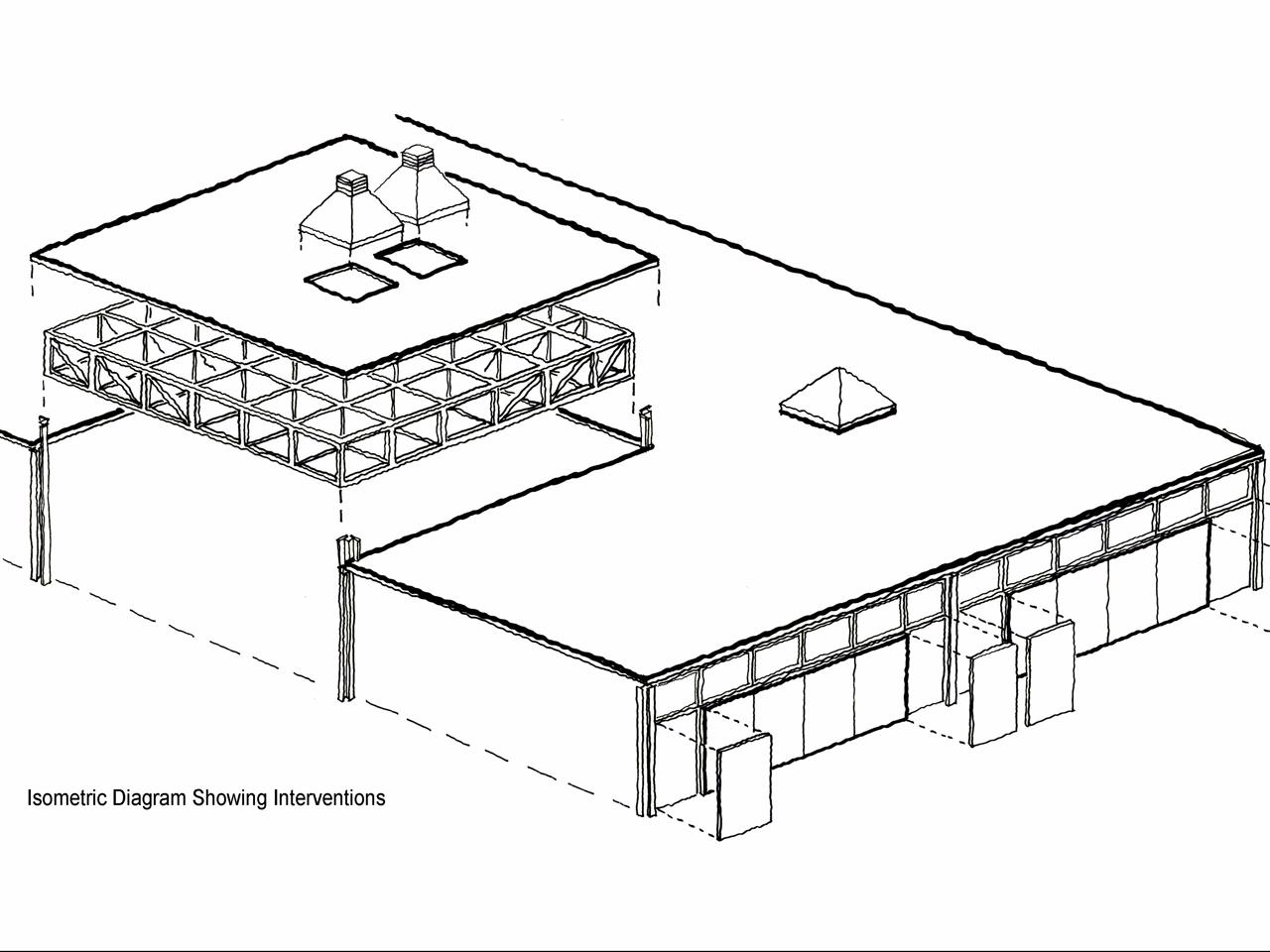
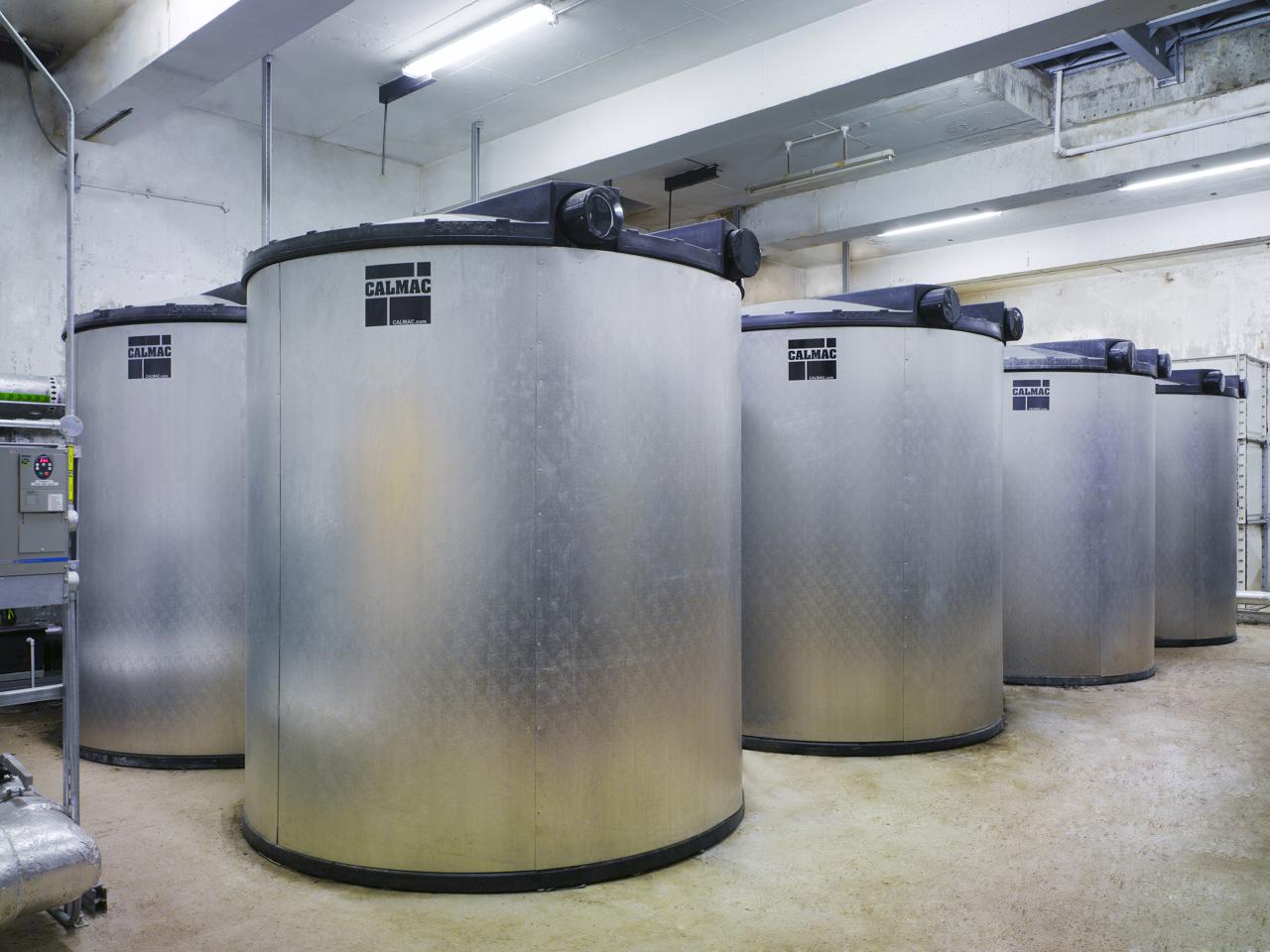











Peter Rice Award - New Development Award, Design and Conservation Award
Louth Local Authorities
0
Best Conservation / Restoration Project
Royal Institute of the Architects of Ireland
0
Best Educational Building
Royal Institute of the Architects of Ireland
0
Sustainability Award
CMG Awards
0
Regional Award - EU
Royal Institute of British Architects
0
Client
Dundalk Institute of Technology
Location
Dundalk, Ireland
Status
In Use
Area
10250
STW were engaged to adapt the factory to a new brief comprising 10,250sqm of classrooms, laboratories and lecture theatres; studios for radio, sound and film; specialist dark rooms, screening rooms and spaces for music performance and recital; all without compromising the architectural integrity of this listed building.
The refurbishment included conservation works to retain the majority of the original 1967 building structure and façade, while upgrading the air-tightness and energy performance of the envelope to achieve contemporary standards of environmental design and thermal comfort.
The flexibility of the original system of free-standing structural bays allowed individual bays to be raised to provide a second level of office accommodation and to bring daylight into the heart of this very deep building via winter gardens and atrium spaces.
Internal circulation routes respected the original grid to create spaces for learning, creativity and social interaction which are easy to navigate and a joy to use.
The completed project improved the building energy rating from G to B1, achieved through the use of sustainable design features including variable-speed air handling units with thermal wheel heat-recovery, chilled beams, displacement ventilation, passive wind-catchers, and smart controls to regulate and smooth electrical energy demand.
Cooling is provided by basement ice banks created using surplus energy from the on-site wind turbine. The air tightness test result of 8.2m2/m2/hr is exceptional for a building of this nature.